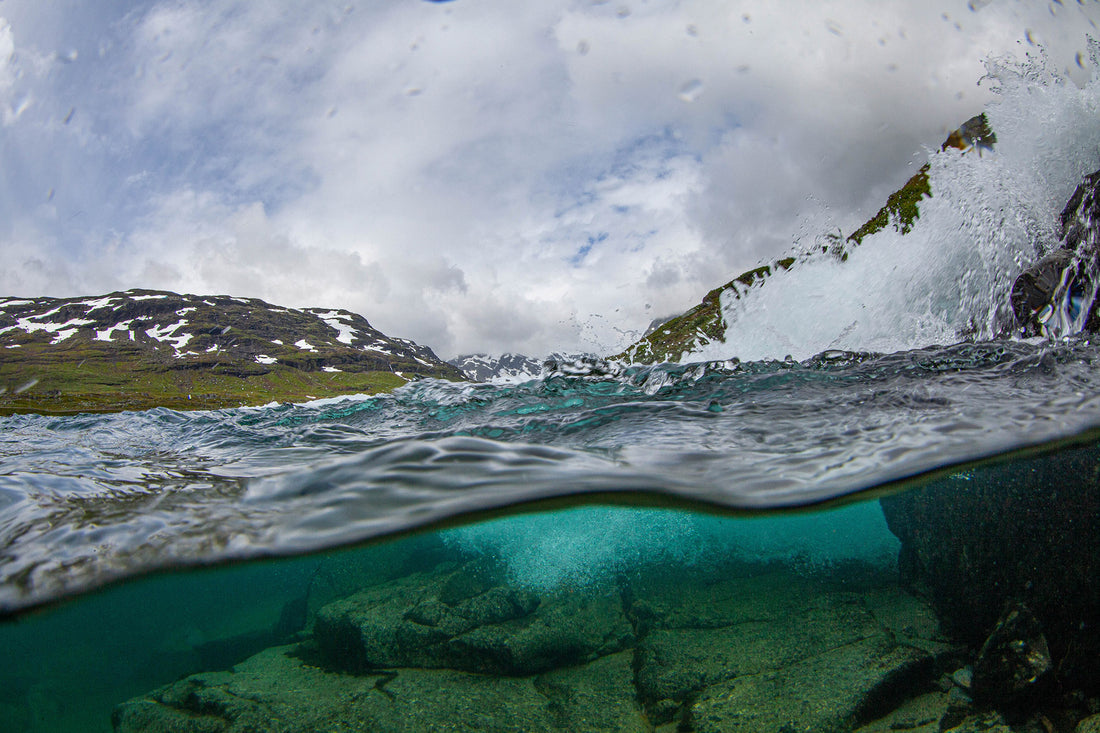On Frivannsliv.no's blog you can read about trips and experiences from freediving. We call it bottle mail. We welcome contributions from our readers. Send your experience with pictures and text to post@frivannsliv.no, and we will contact you.
By: Øivind Johnsen & Michael Byø
The story
In 1860, the first drivable road between Western Norway and Eastern Norway was planned. The road was not completed until 1886, when it was considered a contemporary masterpiece.
61 years ago during the development of hydropower, Ståvatn at Haukeli was dammed and regulated. The water level rose as a result and parts of the old road disappeared overnight.
Around 2012-2013, parts of the road with associated bridges were rediscovered as a diving target, by keen divers who studied recent aerial photographs.
Access
Diving at 980 m above sea level must be considered a summer activity. In the spring, when the level of filling is low, there may be so little water in the reservoir that the bridges are partially visible during the snow melt.
We park along the E134 at a pasture house. The Nupselva, which is our goal, is 200 meters away on the other side of the water.

While the motorhomes "swoosh" past at 30km/h and absorb the majestic nature of the high mountains, we empty the car of diving equipment. There will be a few long looks from those sitting behind the wheel, when we are eventually ready to cross the road.

Contrary to expectations, we make it down the steep side of the road without falling. The sight of crystal clear water with no salt content does something to us, here there are no turbot or other fish to hunt, what are we doing??
We stick our heads under, unfortunately the first thing we see is the remains of a purple GodMorgen yogurt, as well as thousands of small yellow flakes originating from the median strip of the road
The temperature in the water is 7-8 degrees, the visibility 6-10 metres. It does not take long before the historical takes over the first impression of the littering. A little horseshoe, thoughts swirling in my head, how old could it be and how did it end up here?

Soon after we hit the old road, the stones are still there to mark the edge of the road. No one has walked or driven here for over 60 years, but the road would certainly have been passable if it hadn't been for the water.

Shortly afterwards we hit the largest of the 2 bridges, here there is life on the surface as the Nupselva has its outlet a few meters away. It is like being in another world and yet not, as we are used to narrow roads and small bridges. The difference here is that we have the opportunity to swim both above and below the bridge.

In the area around the river outlet, we observe quite a few trout and find both spinners and sinkers on the bottom, which proves that this is a good fishing spot. The tour continues along the road to the east, where there is a rectangular foundation. The county border stone between Vestland and Vestfold and Telemark used to stand here, in the middle of the border. It can be seen today at the car park at Ulevå.


We have swum through history, over bridges and now into another county, the next thing that awaits is a mini-tunnel that was probably built to take away the water in extreme water volumes, as it is located between the bridges.


The last bridge appears shortly after, it's impressive to see how stacking of stone combined with a tiny bit of concrete can look so untouched after so many years, both above and below the surface.

Before we swim back, we take a quick walk around the area by the waterfall, here there are boulders where the workers have carved their initials and great subjects for photography.



Came across an authentic souvenir on the way back, looks good for a Dane 😉

Once back in the car, we sit and accept that we don't need to rinse the equipment so carefully this time. The Nupselva at Haukeli is quickly becoming Western Norway's answer to Lyngstøylvatnet, it is a perfect place to take a break on a journey over the mountains, here everyone can join, big and small, those who don't want to dive can fish or go for a walk.
Tip: Remove 1-2 kg of lead as there is less buoyancy in fresh water.

